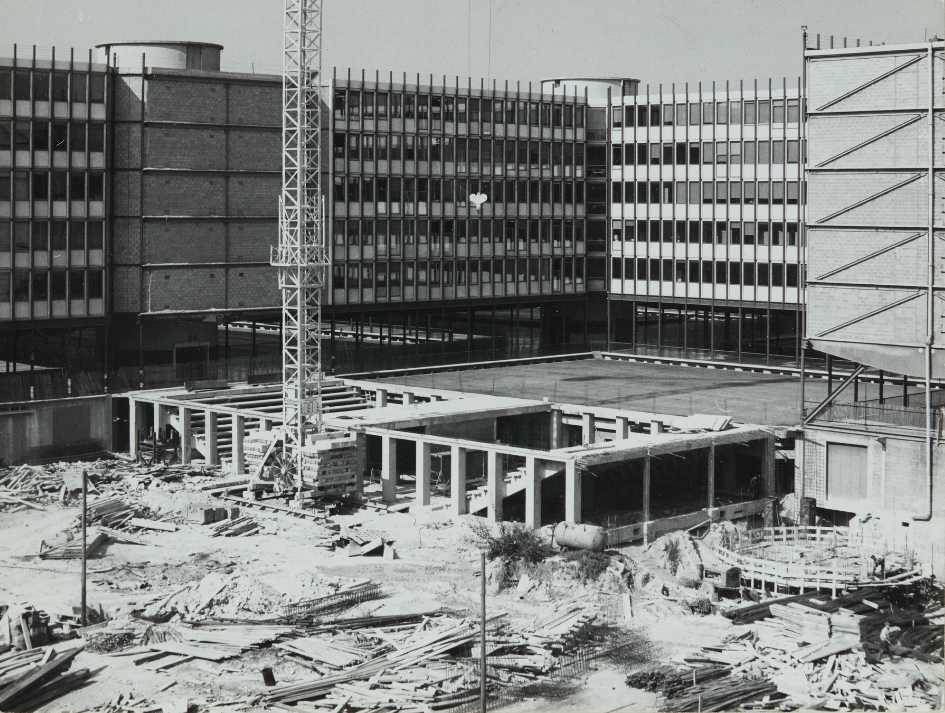History of Sorbonne University

Sorbonne University was created on 1 January 2018 from the merger of the Paris-Sorbonne University of Arts and Humanities (Paris IV) and the Pierre and Marie Curie University of Science and Medicine (Paris VI), which themselves were part of the historic University of Paris. Comprised today of three faculties inherited from this merger (Humanities, Science & Engineering, Medicine) and spread over numerous sites and campuses in the Ile-de-France region, but also on the coasts through its three marine stations, Sorbonne University has a rich and varied history, told through its numerous archives that the BSU preserves and enhances through digitisation projects.
Photographic collection of the construction of the Pierre and Marie Curie campus
The Pierre and Marie Curie campus of the Faculty of Science and Engineering of Sorbonne University, still known as the “Jussieu campus”, extends over approximately 14 hectares (34.6 acres), in place of the former Halle aux Vins, between the Boulevard Saint-Germain and the French National Museum of Natural History, along the Quai Saint-Bernard in the 5th arrondissement of Paris. The idea of moving the Faculty of Science to this site originated in the 1930s, when the need for space arose due to the increase in student numbers, the diversity of the disciplines taught and the insufficient number of premises at the new Sorbonne. In 1946, an interministerial agreement assigned the site to the Faculty of Science.
It was between 1958 and 1961 that the first striking architectural elements of the campus were built, including the two bars designed by Urbain Cassan, known as the “Cassan bars”; one parallel to the Seine and the Quai Saint-Bernard, the other parallel to the Jardin des Plantes of the Museum. In 1962, with the intervention of André Malraux, Minister of Cultural Affairs, Édouard Albert was appointed to design the rest of the new campus, with the agreement of the Dean of the Faculty of Sciences of Paris, Marc Zamansky. In the architect's mind, a building in the shape of a grid was created, a shape that earned it the name the “Gril d’Albert”, or Albert’s Grid. Construction began in 1964 and was completed in 1972, including the completion of the Zamansky Tower. The Gril is divided into towers and sections, the towers are numbered and correspond to each intersection of the grid. The Jussieu campus was not built as Edouard Albert had envisaged: in 1968 he died prematurely and his plans were not fully executed by his fellow architects.
This digitised collection consists of 79 individually packaged photographs and 92 photographs packaged in an album produced between 1959 and 1971 by the various construction companies on the campus, in order to provide information on the progress of the work and to constitute the file of the works carried out. There are photographs of the Halle aux Vins before it was demolished to build the “Gril d'Albert”, but also photographs of the construction of the latter and of the surrounding landscape, at different stages of its construction.
More informaion on this archive on Calames
Link to the collection




